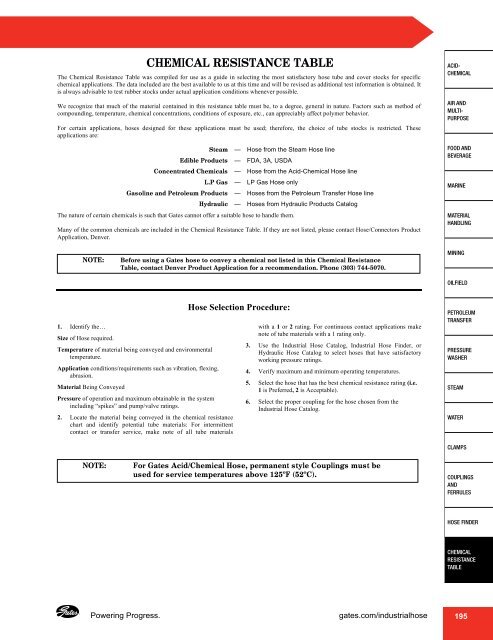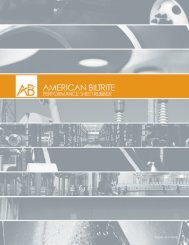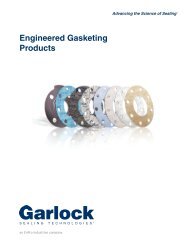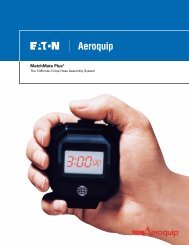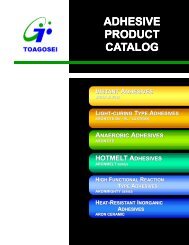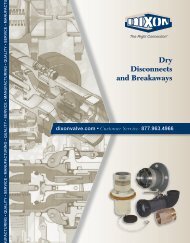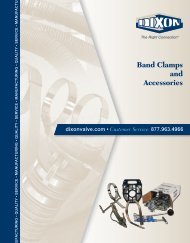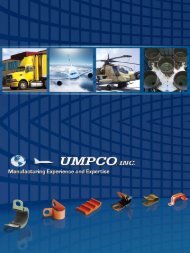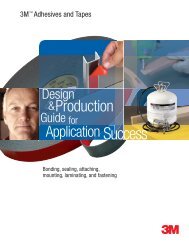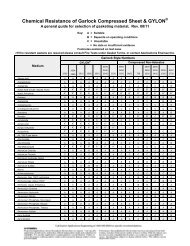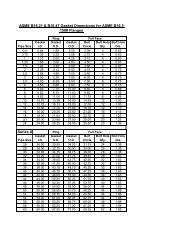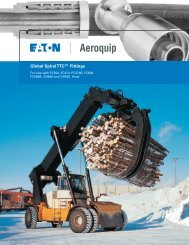Gates Industrial Hose - Wright, F. B.
Gates Industrial Hose - Wright, F. B.
Gates Industrial Hose - Wright, F. B.
Create successful ePaper yourself
Turn your PDF publications into a flip-book with our unique Google optimized e-Paper software.
CHEMICAL RESISTANCE TABLEThe Chemical Resistance Table was compiled for use as a guide in selecting the most satisfactory hose tube and cover stocks for specificchemical applications. The data included are the best available to us at this time and will be revised as additional test information is obtained. Itis always advisable to test rubber stocks under actual application conditions whenever possible.We recognize that much of the material contained in this resistance table must be, to a degree, general in nature. Factors such as method ofcompounding, temperature, chemical concentrations, conditions of exposure, etc., can appreciably affect polymer behavior.For certain applications, hoses designed for these applications must be used; therefore, the choice of tube stocks is restricted. Theseapplications are:Steam — <strong>Hose</strong> from the Steam <strong>Hose</strong> lineEdible Products — FDA, 3A, USDAConcentrated Chemicals — <strong>Hose</strong> from the Acid-Chemical <strong>Hose</strong> lineL.P Gas — LP Gas <strong>Hose</strong> onlyGasoline and Petroleum Products — <strong>Hose</strong>s from the Petroleum Transfer <strong>Hose</strong> lineHydraulic — <strong>Hose</strong>s from Hydraulic Products CatalogThe nature of certain chemicals is such that <strong>Gates</strong> cannot offer a suitable hose to handle them.Many of the common chemicals are included in the Chemical Resistance Table. If they are not listed, please contact <strong>Hose</strong>/Connectors ProductApplication, Denver.ACID-CHEMICALAIR ANDMULTI-PURPOSEFOOD ANDBEVERAGEMARINEMATERIALHANDLINGNOTE:Before using a <strong>Gates</strong> hose to convey a chemical not listed in this Chemical ResistanceTable, contact Denver Product Application for a recommendation. Phone (303) 744-5070.MININGOILFIELD1. Identify the…Size of <strong>Hose</strong> required.Temperature of material being conveyed and environmentaltemperature.Application conditions/requirements such as vibration, flexing,abrasion.Material Being ConveyedPressure of operation and maximum obtainable in the systemincluding “spikes” and pump/valve ratings.2. Locate the material being conveyed in the chemical resistancechart and identify potential tube materials: For intermittentcontact or transfer service, make note of all tube materials<strong>Hose</strong> Selection Procedure:with a 1 or 2 rating. For continuous contact applications makenote of tube materials with a 1 rating only.3. Use the <strong>Industrial</strong> <strong>Hose</strong> Catalog, <strong>Industrial</strong> <strong>Hose</strong> Finder, orHydraulic <strong>Hose</strong> Catalog to select hoses that have satisfactoryworking pressure ratings.4. Verify maximum and minimum operating temperatures.5. Select the hose that has the best chemical resistance rating (i.e.1 is Preferred, 2 is Acceptable).6. Select the proper coupling for the hose chosen from the<strong>Industrial</strong> <strong>Hose</strong> Catalog.PETROLEUMTRANSFERPRESSUREWASHERSTEAMWATERCLAMPSNOTE:For <strong>Gates</strong> Acid/Chemical <strong>Hose</strong>, permanent style Couplings must beused for service temperatures above 125ºF (52ºC).COUPLINGSANDFERRULESHOSE FINDERCHEMICALRESISTANCETABLE®Powering Progress. gates.com/industrialhose 195


